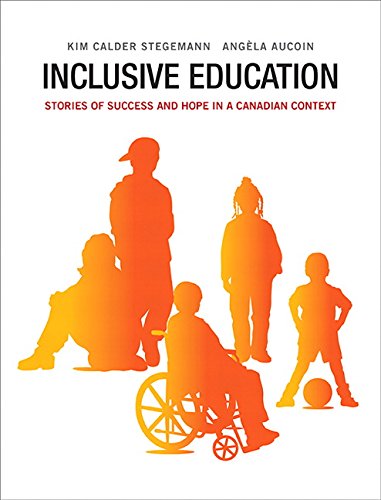
In our class on Inclusive Education, in pairs we had to do a case study from our textbook Inclusive Education: Stories of Success and Hope in a Canadian Context (which in an amazing textbook by the way). This assignment really helped me see my part as an educator in creating a classroom that all my students are welcome and have the tools that they need to succeed.
Here is a summary of my classmate and I’s case study:
Jennifer was born with partial sight due to cataracts, and she now experiences blurred and cloudy central and peripheral vision, along with visual fatigue. Her diagnosis was made before she entered into the school system but her Individual Education Plan (IEP) was not implemented until she was in grade two. This decision was made in kindergarten and grade one due to the fact that she did not need accommodations because the print and font was large enough for her access and the majority of the classroom activities were oral based as opposed to written. She has one brother, and her mother, Mona, works at the urban Catholic School that Jennifer is about to graduate from. Jennifer is on the verge of transitioning from high school to university where she is interested in becoming a teacher.
Jennifer had two very different school experiences during her elementary years and her high school years. During her elementary years she had a lot of assisted technology to help her read, write and complete assignments. Jennifer found that because of all the various technologies, she was segregated to the back of the classroom where the technology was located. As she moved into high school, Jennifer found that there was less segregation as she often asked to sit at the front of the class and used her tablet to access the course material. Early on in her educational experience Jennifer became a strong self-advocate with the help of her mother. To inform her teachers of her needs in high school, she would often go to her teachers at the beginning of the semester to make sure they could accommodate her. Despite her disability, some of her teachers were unwilling to compromise or change their classroom plans to accommodate her needs in the classroom.
Although Jennifer had difficulty with some of her teachers in high school, overall the school staff and administrators were very understanding and accommodating to her educational needs. She often received funding for specialized technology and equipment such as a special microscope that projected onto a TV screen so Jennifer could still participate in her Biology lessons. Additionally, her mother, Mona was a part of the school staff which aided in creating a supportive community in the school while also providing insight into what services and technologies were available for her daughter.
Some of the biggest factors for Jennifer and her school experience were the early diagnosis of her partial blindness, her mother’s aid and influence in the school and the funding available for her assistive technology. Due to the fact that Jennifer was diagnosed before she entered elementary school, her parents, teachers and school administrators were able to work together to come up with an educational plan before she entered the school system. Additionally, Jennifer being able to have her mother’s support and insight into the school system helped provide Jennifer with the tools that she needed to succeed in her educational experience. It is also important to note that the funding that the schools were able to receive on Jennifer’s behalf was instrumental in supporting and aiding in her success throughout her elementary and high school years. Being able to access all the various technologies provided an opportunity for Jennifer to see what worked and what was useful to her in her classes on a regular basis.
The reason that I wanted to include our summary is because as educators we have a crucial role in student’s lives such as Jennifer. As I read this case study, it is obvious that Jennifer’s story is a success story. She became a fierce self-advocate; she received the funding for the technology and supports she needed, and she had a strong support system.
Despite her success, Jennifer’s story is also filled with areas where we (everyone in the educational system) could have done better for her. For example, due to her partial blindness, Jennifer states she was isolated to an area of the class away from her classmates in elementary school. This isolation not only impacted her educational journey but also her relationship with her peers. Additionally, some of her high school teachers put their own convenience over accommodating her needs in the classroom.
For me, it is not acceptable that Jennifer’s teachers were not willing to make accommodations for her, and I would never want to do this to a student. Jennifer’s story was a huge learning experience for me as it brought up a lot of questions about how we can do better for our students. For example, this case study left me with a lot of questions. How could we have designed our classrooms better so a student like Jennifer isn’t isolated from the class? How could we as teachers have been better advocates for our students? What teacher training can I attend to help me be more aware of the needs of a diverse classroom? All of these questions are ones that I still don’t have the answers to, but I am willing to put in the work and continue to learn about how to include every student in my classroom.
I am grateful for the opportunity that this case study gave me to reflect on what kind of educator I want to grow to be and brought my attention to issues that I had not previously known.